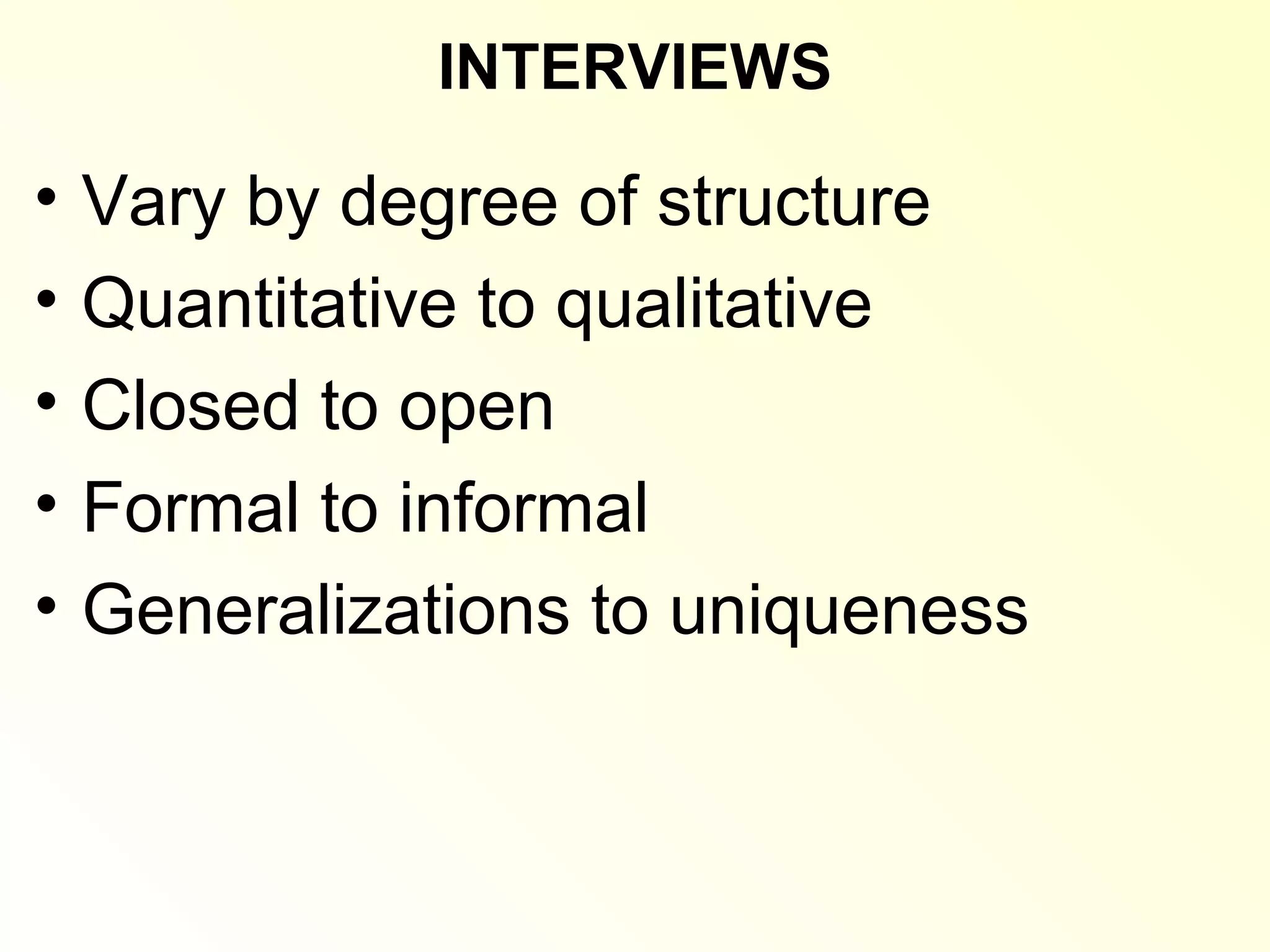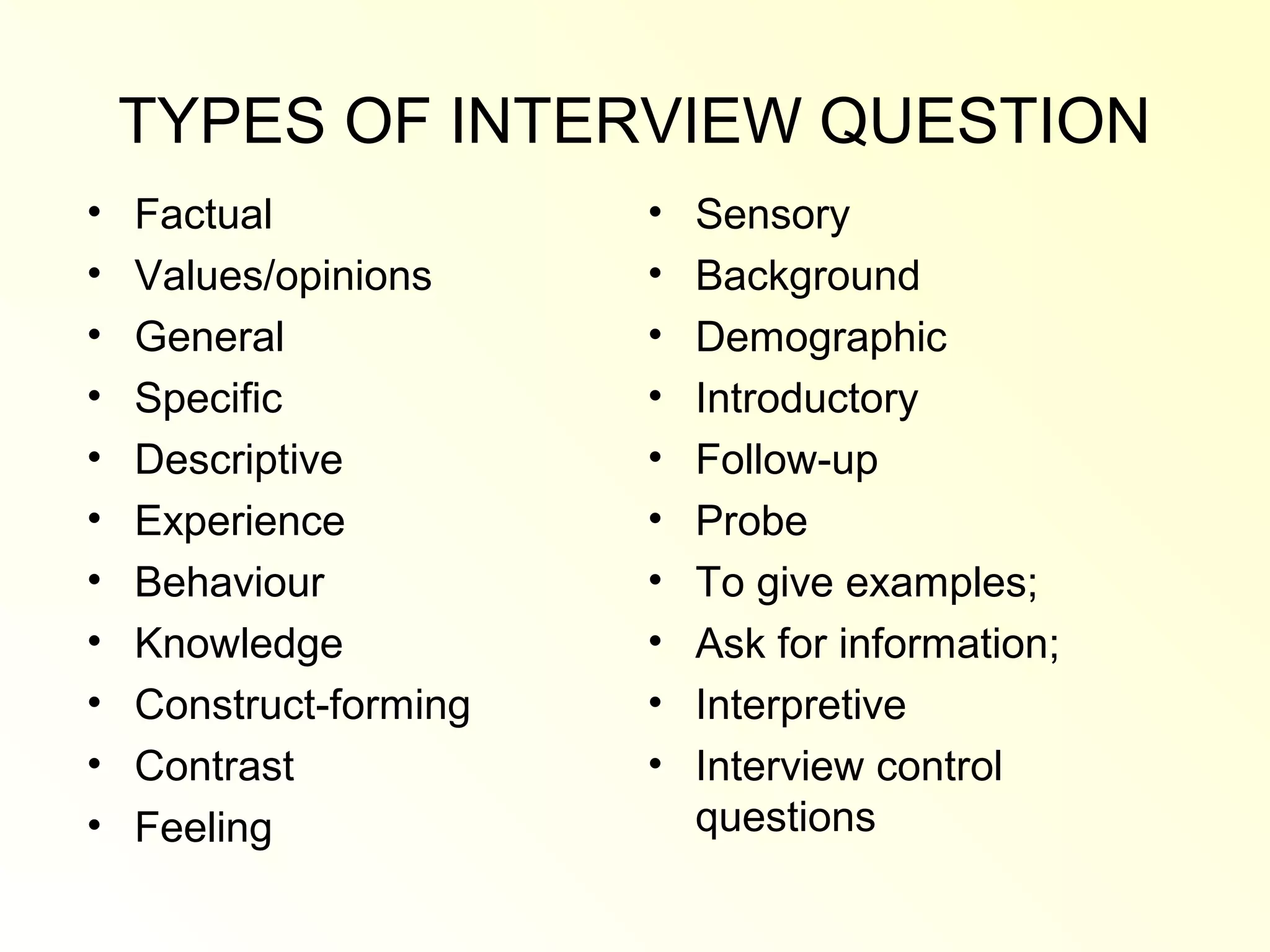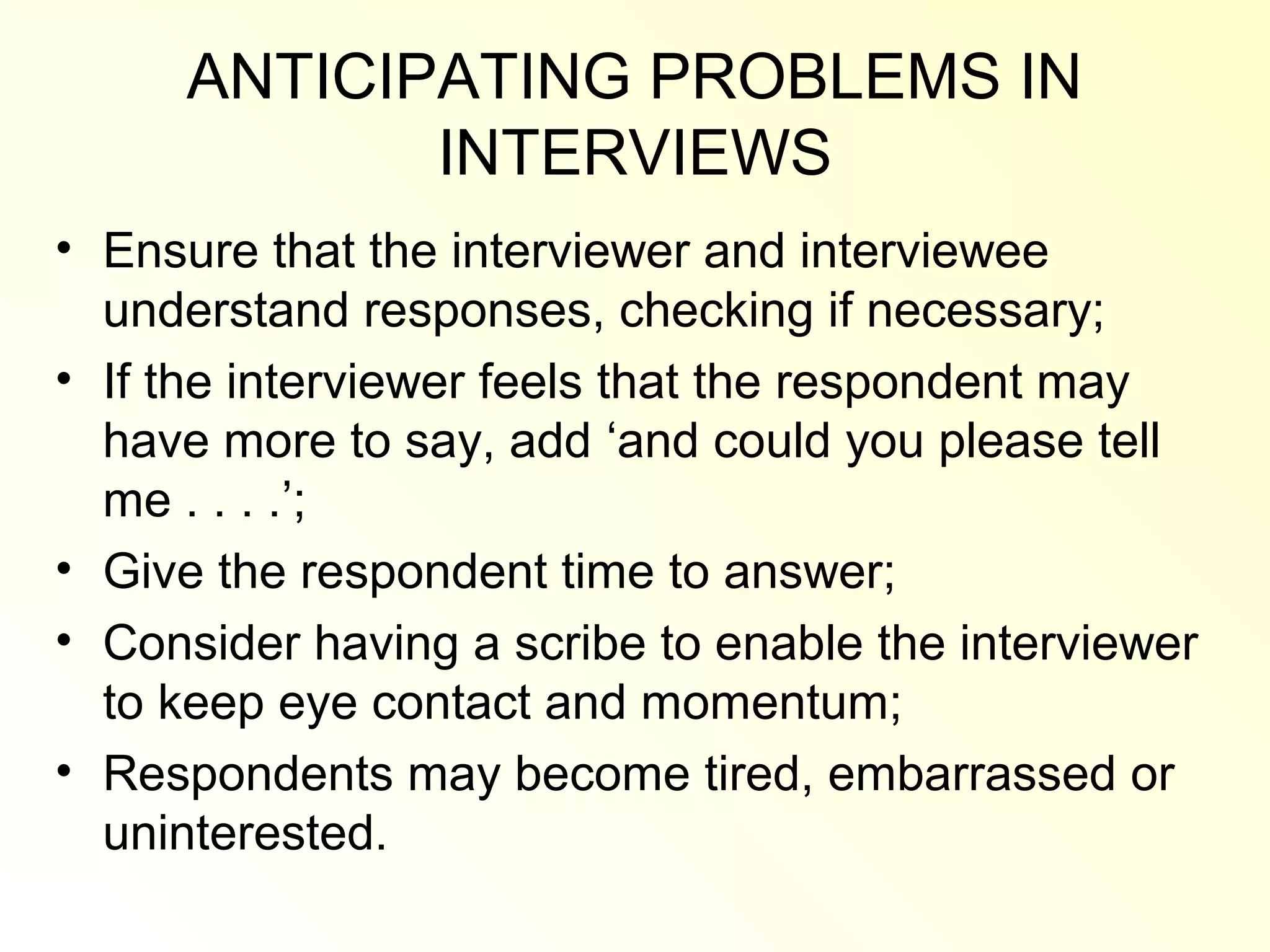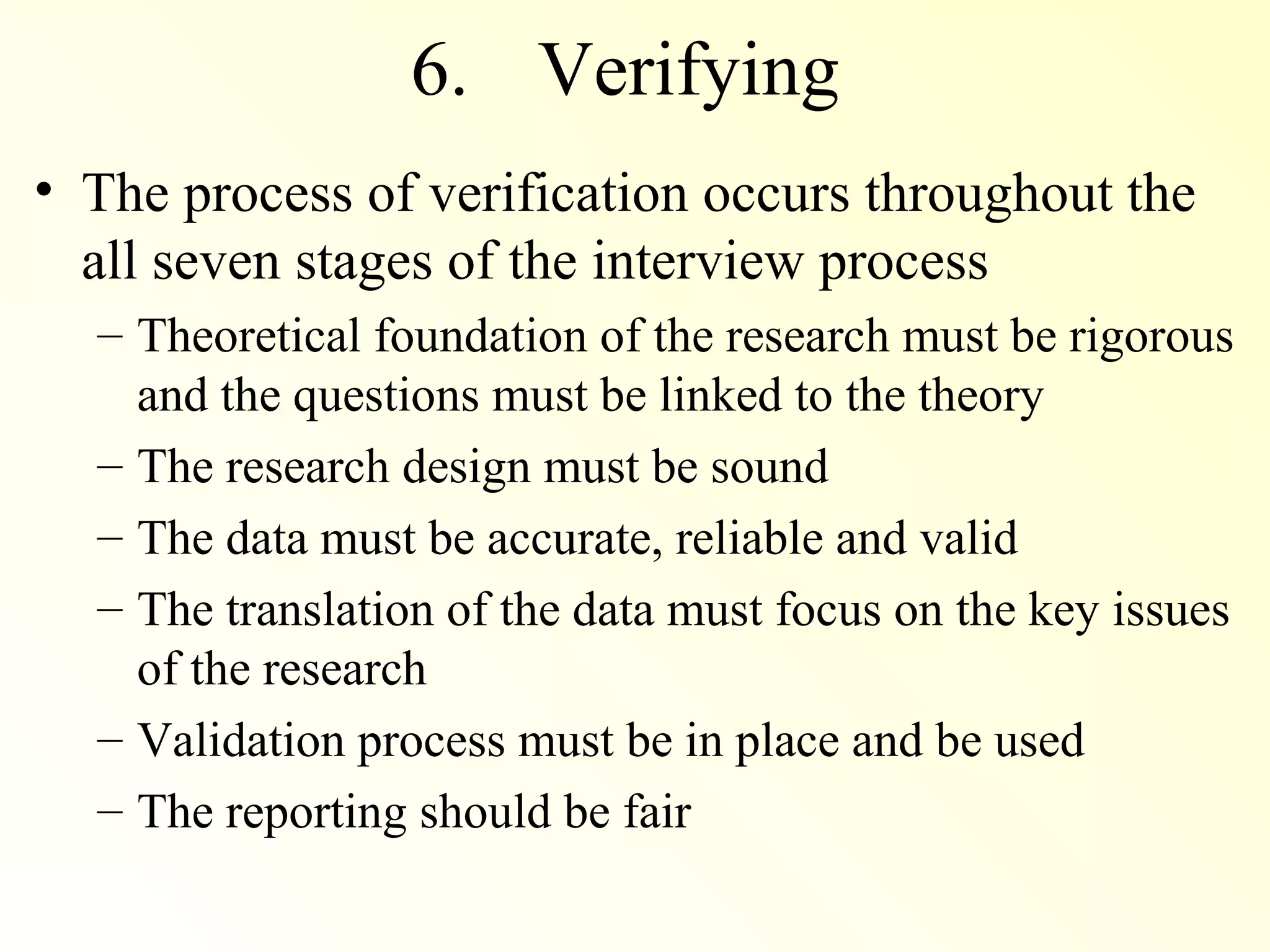The document provides an overview of interviews as a method of data collection. It discusses conceptions of interviews, purposes of interviews, types of interviews, planning interview procedures, and ethical issues. The key stages of interview research are identified as thematizing, designing, interviewing, transcribing, analyzing, verifying, and reporting. Guidance is provided on structuring questions, conducting interviews, anticipating problems, transcribing data, analyzing interviews, and verifying and reporting results.
























